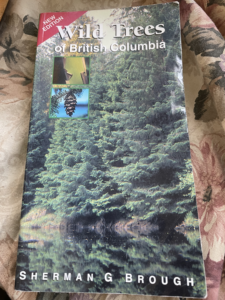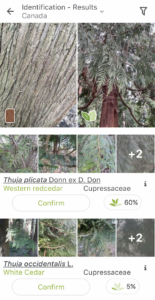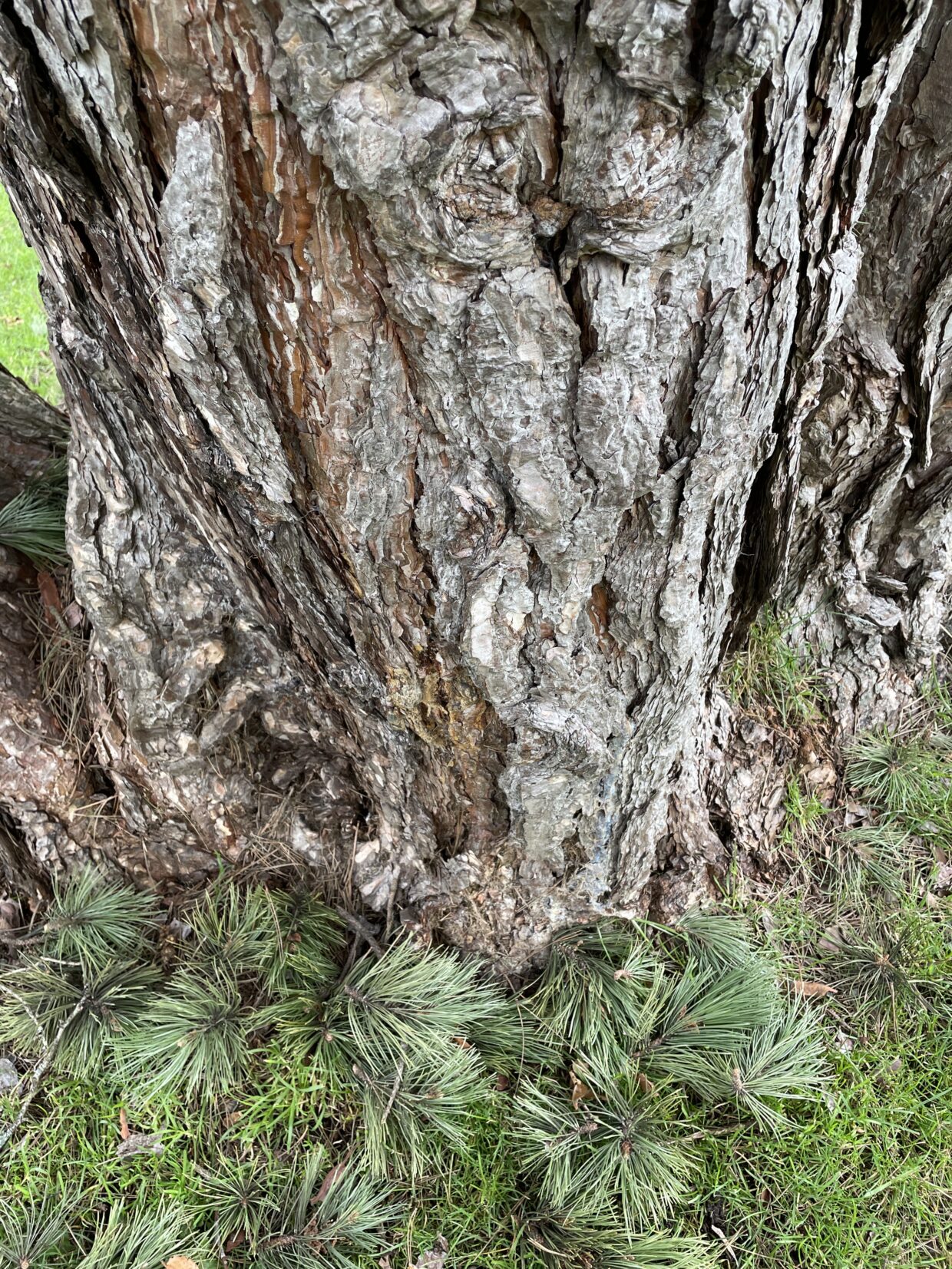As I didn’t have the best luck with Plant ID applications specifically for trees I decided to try a book. I settled on “Wild Trees of British Columbia” by Sherman G Brough as it would have many of the trees I see around town and in parks on my walks and it gives good descriptions of many characteristics of trees.

I think a book is in many ways more my pace, as then I am actually not only focused on what the app is (or is not) telling me, but actually learning from the information the book provides on how to identify a tree and what characteristics make each tree unique. Before going to try the book out in the outdoors, I spent a bit of time reading and trying to gather info about trees I think* I have already crossed paths with.
I then thought it could be a good idea to try and look at some of the less successful screenshots I have from the apps (ones where the % match was not super high), and see if the book could help identify them.

The picture in the top left corner of the above image is mine. The PlantNet app identified this as 60% match for Western Red-Cedar. I looked at the pictures in the book and read the description. I realized right away that maybe part of my problem, in general, was that identification solely by the tree’s bark could potentially be more difficult and that you need to look at several characteristics. For Western Red-Cedar the book focuses more on the long droopy branches; the large number of small, oblong cones on the branches; and the scale-like leaves. Further, to really identify a tree you seem to need to look at various characteristics. I had tried this a little in the app when it would let you add another photo but I didn’t see great improvement in the overall % match.

Leave a Reply
You must be logged in to post a comment.